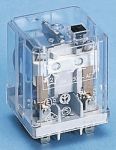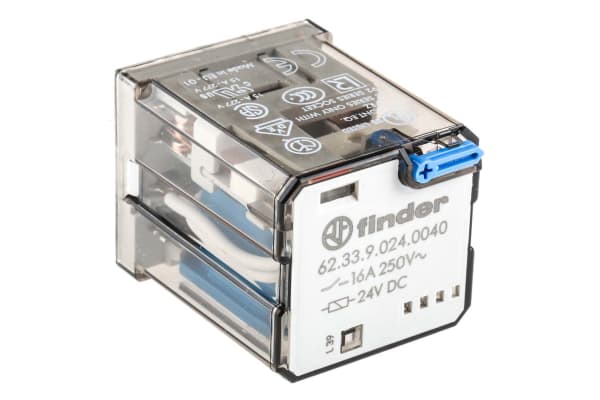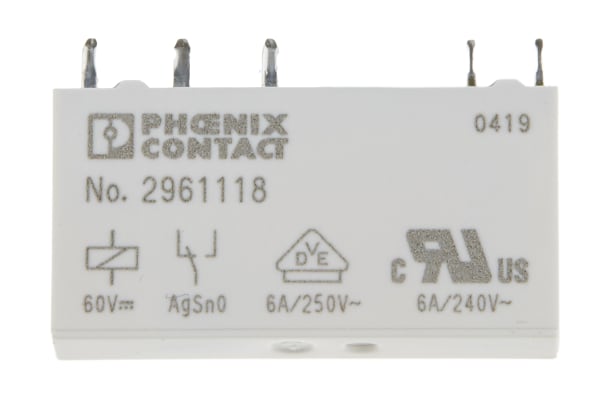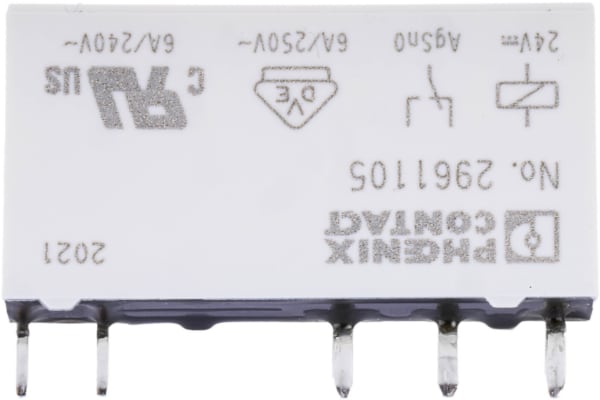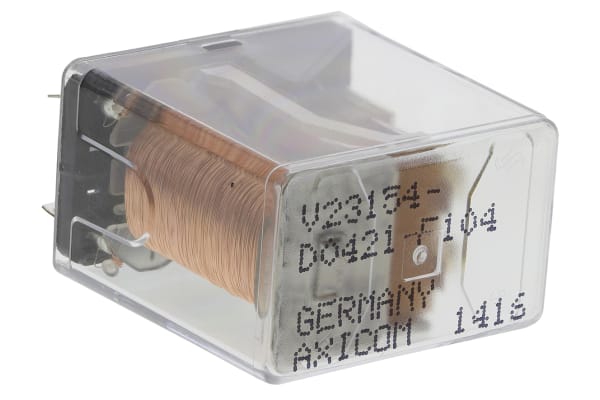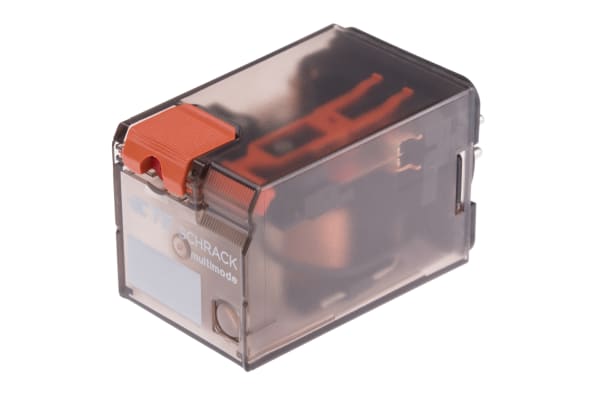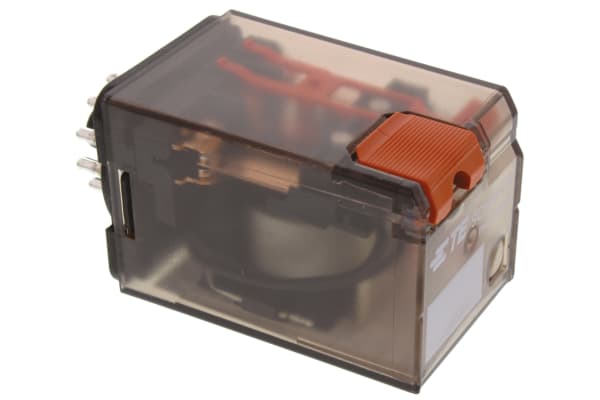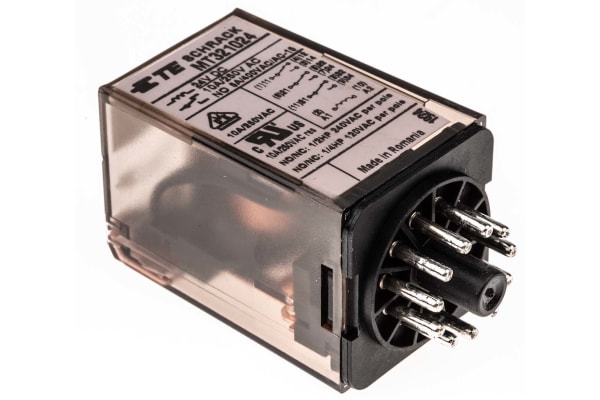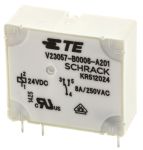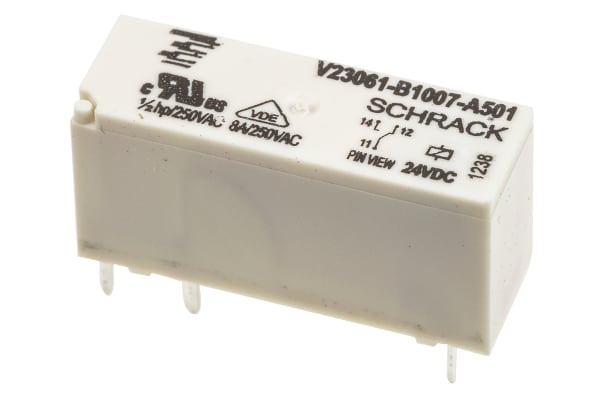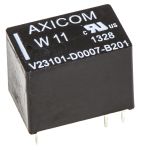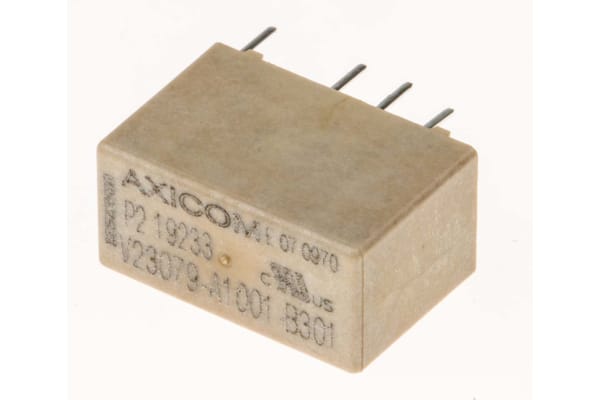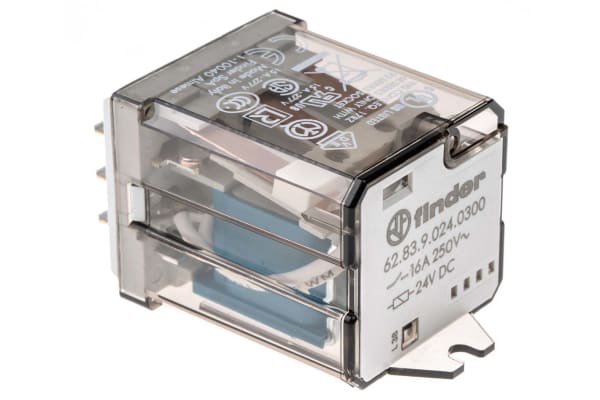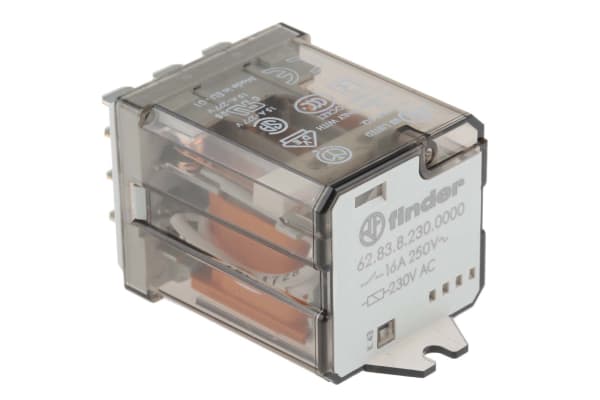Non-Latching Relays
Relays are electrical switches that are operated by electrical impulses with the primary function to open and close a circuit, they can also be referred to as industrial switches. There are 2 main types available, latching and non–latching relays.How do non-latching relays work?Non-latching relays are in a normally closed (NC) position and will stay in this state without power. When power passes through the circuit, the relay switched to a normally open (NO) position by using an internal coil to generate a magnetic force, holding this NO position. Once the current is turned off, it returns to the NC position. This makes non-latching relays well suited to push-button applications like keyboards and micro-controller input buttons.What are non-latching relays used for?Non-latching relays are highly durable and versatile components, making their performance long lasting and suitable for use in a wide range of applications, such as:Automotive enginesHousehold appliancesIndustrial machineryMedical equipmentTelecommunications equipmentWhat is the difference between latching and non-latching relays?Both types of relays in similar in design and function, however, a significant difference between them is that a latching relay will remain in the last position it when it was last powered, whereas a non-latching goes back to its normal position. This makes each more type of relay suitable for different applications. Considerations when selecting a relayWhen choosing a relay, it is important to consider a number of specifications to ensure it is fit for purpose, some factors include:Coil voltage – the required voltage to actuate the switching mechanism. If a voltage is too high this could damage the components, if it is too low then it will not actuate. Contact configuration – This is the state the contacts are in without power. For example SPST, single pole single throw.Contact material – the relay contacts are available in many materials that have certain properties. Common materials are gold, silver, tin oxide and nickel Coil power – the amount of power (watts) the coil operates at. This must match the power in the circuit for correct function. Coil resistance – the amount of resistance (ohms) in the circuit that the coil creates.
-
Finder, 24V ac Coil Non-Latching Relay 3PDT, 16A Switching Current Plug In, 3 Pole, 62.33.8.024.0040
IDR320,543.84 -
RELAY 6233 24V 3RT
IDR295,160.46 -
Finder, 230V ac Coil Non-Latching Relay DPDT, 16A Switching Current Plug In, 2 Pole, 62.32.8.230.0040
IDR326,522.57 -
Finder, 230V ac Coil Non-Latching Relay 3PDT, 10A Switching Current Plug In, 3 Pole, 55.33.8.230.0010
IDR263,798.35 -
Finder, 24V dc Coil Non-Latching Relay 3PDT, 10A Switching Current Plug In, 3 Pole, 55.33.9.024.0010
IDR181,249.92 -
Phoenix Contact, 60V dc Coil Non-Latching Relay SPDT PCB Mount Single Pole, 2961118
IDR347,395.68 -
Phoenix Contact, 24V dc Coil Non-Latching Relay SPDT, 10mA Switching Current PCB Mount Single Pole, 2961105
IDR271,035.76 -
TE Connectivity, 24V dc Coil Non-Latching Relay 4PDT, 2A Switching Current PCB Mount, 4 Pole, V23154D 421B110
IDR2,320,586.36 -
TE Connectivity, 24V dc Coil Non-Latching Relay DPDT, 5A Switching Current PCB Mount, 2 Pole, V23154D 421F104
IDR2,276,742.34 -
TE Connectivity, 115V ac Coil Non-Latching Relay DPDT, 10A Switching Current Plug In, 2 Pole, MT226115 6-1393090-7
IDR326,207.90 -
TE Connectivity, 24V dc Coil Non-Latching Relay 3PDT, 10A Switching Current Plug In, 3 Pole, MT323024 8-1393091-4
IDR364,073.19 -
TE Connectivity, 24V dc Coil Non-Latching Relay 3PDT, 10A Switching Current Plug In, 3 Pole, MT321024 7-1393091-0
IDR308,481.49 -
TE Connectivity, 24V dc Coil Non-Latching Relay SPDT, 8A Switching Current PCB Mount Single Pole, 8-1393215-1
IDR228,869.98 -
TE Connectivity, 24V dc Coil Non-Latching Relay DPDT, 8A Switching Current PCB Mount, 2 Pole, RP421024
IDR280,056.30 -
TE Connectivity, 24V dc Coil Non-Latching Relay SPDT, 8A Switching Current PCB Mount Single Pole, V23061B1007A501
IDR62,934.00 -
TE Connectivity, 24V dc Coil Non-Latching Relay SPDT, 1A Switching Current PCB Mount Single Pole, V23101D7B201
IDR151,670.94 -
TE Connectivity, 12V dc Coil Non-Latching Relay DPDT, 2A Switching Current PCB Mount, 2 Pole, V23079A1003B301
IDR63,458.45 -
TE Connectivity, 5V dc Coil Non-Latching Relay DPDT, 2A Switching Current PCB Mount, 2 Pole, V23079A1001B301 1393788-3
IDR30,522.99 -
TE Connectivity, 24V dc Coil Non-Latching Relay SPDT, 5A Switching Current PCB Mount Single Pole, PE014024
IDR62,409.55 -
TE Connectivity, 12V dc Coil Non-Latching Relay SPDT, 5A Switching Current PCB Mount Single Pole, PE014012
IDR60,836.20 -
Finder, 230V ac Coil Non-Latching Relay 3P-NO, 16A Switching Current Plug In, 3 Pole, 62.83.8.230.0300
IDR249,743.09 -
Finder, 24V dc Coil Non-Latching Relay 3P-NO, 16A Switching Current Flange Mount, 3 Pole, 62.83.9.024.0300
IDR276,699.82 -
Finder, 230V ac Coil Non-Latching Relay 3PDT, 16A Switching Current Plug In, 3 Pole, 62.83.8.230.0000
IDR337,536.02 -
Finder, 24V dc Coil Non-Latching Relay DPNO, 16A Switching Current Flange Mount, 2 Pole, 62.82.9.024.0300
IDR251,840.89



